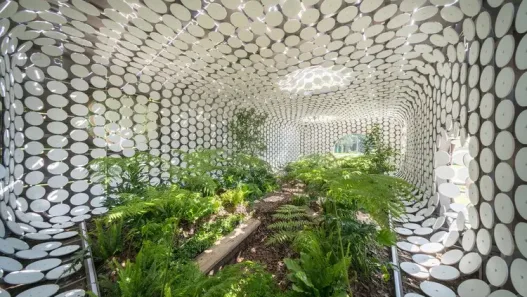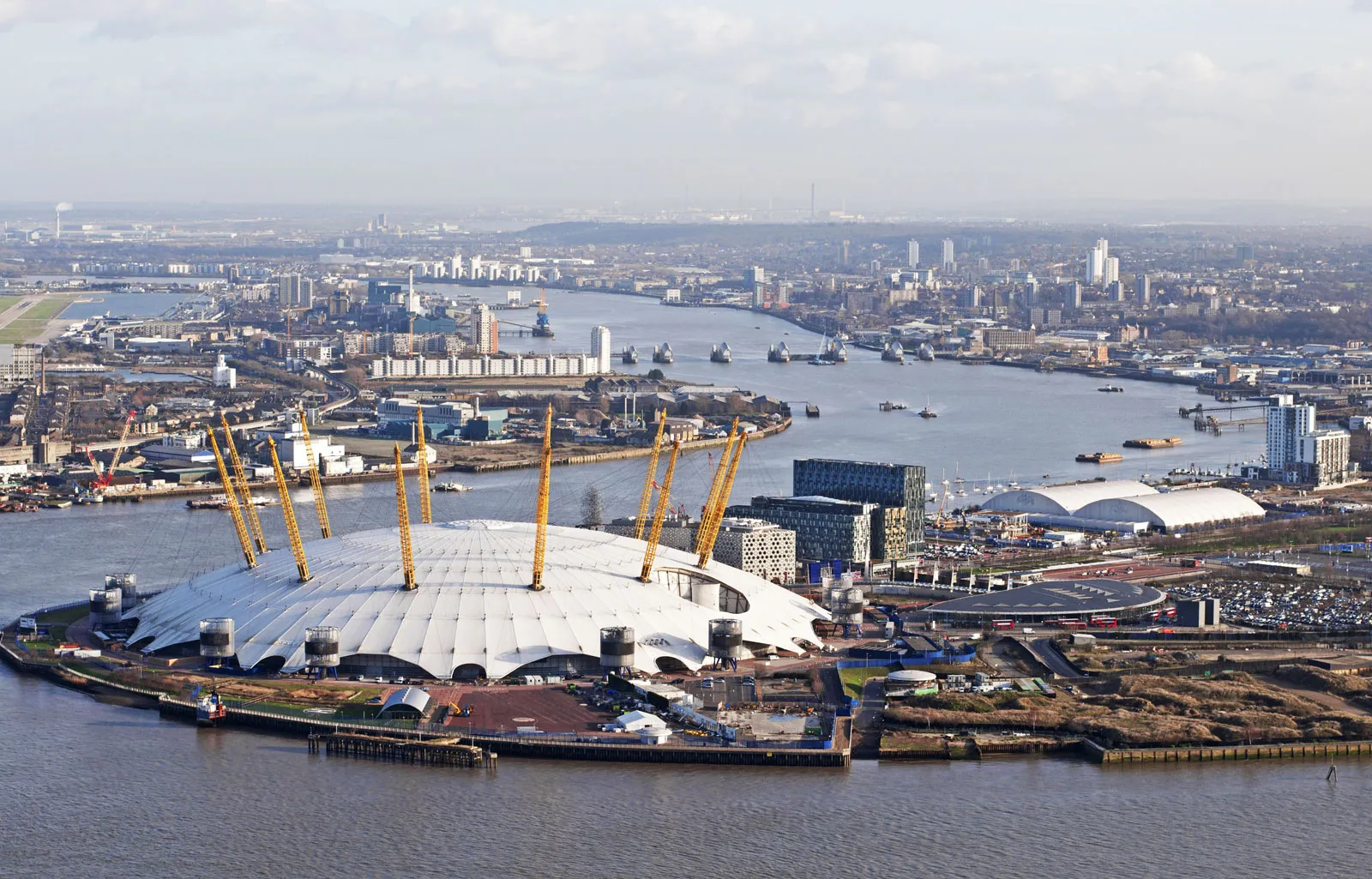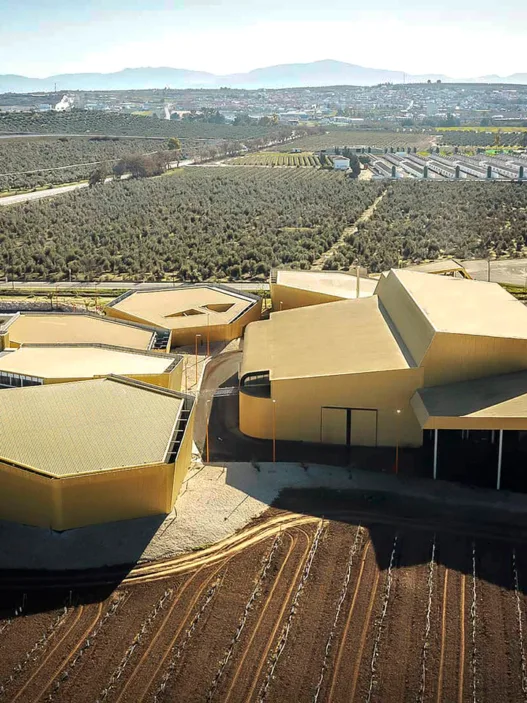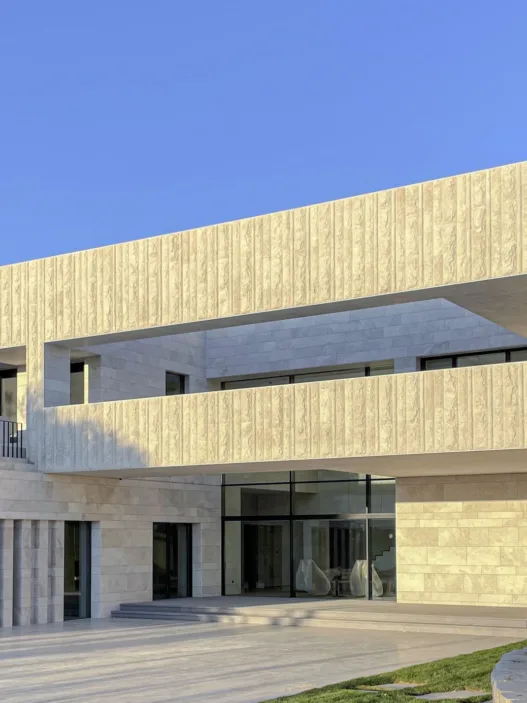Imagine a place where you can escape the hustle and bustle of everyday life, reconnect with yourself and find inner peace. This is the essence of retreats and wellness centers – spaces designed to promote well-being and cultivate a sense of peace.
Defining Retreats and Wellness Centers: Purpose and Importance
Retreats and wellness centers are spaces dedicated to promoting physical, mental and spiritual well-being. They offer a range of programs and services designed to help individuals achieve a state of balance and renewal, including yoga, meditation, massage, spa treatments and healthy meals.
The importance of these spaces lies in their ability to provide a sanctuary away from the stresses of modern life. They offer a unique opportunity for individuals to disconnect from the outside world, reconnect with themselves and explore their inner landscape.
Historical Context of Wellness in Architecture
The concept of wellness in architecture has deep roots in history. Ancient civilizations, from the Greeks to the Romans, recognized the importance of creating spaces that promote health and well-being. Temples, baths and gardens were designed to promote a sense of peace and harmony.
In the 19th century, the rise of the spa movement brought a renewed focus on the therapeutic benefits of natural environments and healing waters. This trend has paved the way for the development of modern wellness centers, which often incorporate elements of nature and natural materials into their design.
Key Features of Effective Retreat Design
Effective retreat design goes beyond aesthetics; it is about creating an environment that supports well-being on multiple levels. Key features include:
- Natural Light and Ventilation: Plenty of natural light and fresh air are essential to promote a sense of well-being.
- Connection to Nature: Incorporating natural elements such as gardens, courtyards and water features can create a calming and restorative atmosphere.
- Sensory Stimulation: Thoughtful use of materials, textures, colors and sounds can create a relaxing and inviting environment.
- Privacy and Tranquility: Retreats should offer spaces for quiet reflection and relaxation, allowing guests to escape the noise and distractions of everyday life.
- Functionality and Comfort: Retreats should be designed with functionality and convenience in mind, providing comfortable accommodation, well-equipped facilities and spaces for movement and relaxation.
The Role of Architecture in Promoting Wellbeing
Architecture plays a crucial role in promoting wellbeing by shaping our experiences and influencing our emotions. A well-designed retreat can create a sense of calm, reduce stress and improve our overall sense of wellbeing.
Imagine a retreat in a tranquil forest, where the architecture is in perfect harmony with the natural surroundings. The use of natural materials, soft lighting and calming colors create a sense of peace and tranquility, inviting guests to unwind and reconnect with themselves.
Overview of Global Trends in Retreat and Wellness Architecture
The global wellness industry is growing rapidly and with it the demand for innovative and inspiring retreat and wellness architecture. Emerging trends include:
- Integration of Technology: Retreats are increasingly using technology to enhance the guest experience, offering features such as smart home systems, virtual reality experiences and personalized wellness programs.
- Sustainable Design: sustainability is becoming increasingly important in retreat design, with a focus on using environmentally friendly materials, reducing energy consumption and minimizing environmental impact.
- Holistic Health: Retreats are expanding their offerings to encompass a holistic approach to health, incorporating mindfulness practices, traditional healing methods and personalized wellness programs.
- Experiential Design: Retreats are creating immersive experiences that go beyond traditional spa treatments, offering activities such as nature walks, cooking classes and art workshops.
These trends reflect a growing awareness of the importance of well-being and the power of architecture to create spaces that support our physical, mental and spiritual health.
Design Principles for Retreats and Wellness Centers
Creating a truly restorative retreat goes beyond simply building a beautiful space. It’s about understanding design principles that promote well-being and create an environment that nourishes the mind, body and spirit.
Connection with Nature: Biophilic Design Elements
Biophilic design, which incorporates elements of nature into built environments, is the cornerstone of successful retreat design. By bringing the outdoors inside, we can create a sense of calm, reduce stress and improve our overall sense of well-being.
Imagine a retreat where floor-to-ceiling windows frame breathtaking views of a lush forest or a courtyard garden provides a tranquil oasis for relaxation. These biophilic elements create a connection to nature that is both visually stimulating and emotionally restorative.
Here are some key biophilic design elements to consider:
- Natural Light: Maximizing natural light through large windows and skylights creates a sense of openness and connection to the outdoors.
- Nature Views: Incorporating views of trees, water or other natural features can provide a calming and restorative experience.
- Natural Materials: Using natural materials such as wood, stone and bamboo creates a sense of warmth and connection to the earth.
- Water Features: The sound and sight of water can be incredibly relaxing, creating a sense of calm and tranquility.
- Plants and Greenery: Bringing plants and greenery indoors can purify the air, create a sense of vitality and improve the overall aesthetic.
Spatial Organization: Creating Zones for Relaxation and Activity
The layout of a retreat should be carefully planned to create different zones for relaxation, activity and social interaction. This allows guests to move seamlessly between different states of being, promoting a sense of balance and well-being.
Imagine a retreat with a private space for yoga and meditation, a tranquil library for quiet reflection, a vibrant communal dining area for social interaction and a serene spa for rejuvenation. Each zone is designed to support a specific activity or mood, creating a harmonious flow throughout the retreat.
Here are some key considerations for spatial organization:
- Flow and Circulation: The layout should encourage a natural flow of movement and guide guests easily between different zones.
- Privacy and Tranquility: Private spaces for relaxation and contemplation should be carefully designed to provide a sense of seclusion and peace.
- Social Interaction: Communal spaces should be designed to foster a sense of connection and community by encouraging interaction and shared experiences.
- Flexibility and Adaptability: The design should be flexible enough to accommodate a variety of activities and meet the needs of different guests.
Material Selection: Sustainable and Healing Materials
The materials used in a retreat should be carefully selected to create a feeling of warmth, comfort and well-being. Sustainable and natural materials are particularly suitable for retreat design as they promote a sense of connection with nature and create a calming and restorative atmosphere.
Imagine a retreat where the walls are clad in reclaimed wood, the floors are made of polished stone and the furniture is made from sustainable bamboo. These materials not only create a beautiful and inviting aesthetic, but also contribute to a healthier and more sustainable environment.
Here are some key considerations for choosing materials:
- Natural Materials: Using natural materials such as wood, stone, bamboo and wool creates warmth, authenticity and a sense of connection to nature.
- Sustainable Practices: Selecting materials that are sustainably sourced and manufactured minimizes environmental impact and encourages responsible design.
- Durability and Longevity: Choosing durable materials that will stand the test of time ensures that the retreat will remain beautiful and functional for years to come.
- Comfort and tactility: Materials should be chosen for their comfort and tactility to create a sensory experience that is both relaxing and inviting.
Light and Air: The Importance of Natural Light and Ventilation
Natural light and fresh air are essential for promoting well-being. By maximizing natural light and ventilation, we can create a brighter, more invigorating and healthier environment.
Imagine a retreat where large windows flood the interior with natural light, creating a sense of openness and connection to the outdoors. Or a place where a well-designed ventilation system provides a constant flow of fresh air, supporting a sense of vitality and well-being.
Here are some key considerations for light and air:
- Daylight Optimization: Maximizing natural light through large windows, skylights and light wells creates a brighter and more invigorating environment.
- Ventilation Strategies: Implementing effective ventilation systems ensures a constant flow of fresh air, creating a healthy and comfortable indoor environment.
- Thermal Comfort: The design should consider thermal comfort, ensuring that the retreat is well insulated and maintains a comfortable temperature throughout the year.
- Glare Control: The use of appropriate window treatments and shading devices can minimize glare and create a more comfortable and relaxing atmosphere.
Notable Retreats that Exemplify Design Principles
There are many examples of retreats around the world that follow these design principles to create spaces that are both beautiful and restorative. Here are a few notable examples:
- The Golden Door in San Marcos, California: This iconic retreat is renowned for its connection to nature, with spectacular views of the surrounding mountains and a focus on biophilic design elements.
- The Canyon Ranch Woodside in Woodside, California: This retreat is known for its luxury accommodations, emphasis on wellness and thoughtful use of natural materials and sustainable practices.
- Kamalaya Wellness Sanctuary & Holistic Spa in Koh Samui, Thailand: Set in lush tropical surroundings , this retreat offers a holistic approach to wellness and incorporates traditional Thai healing practices into its design.
These studies demonstrate the power of design to create spaces that promote wellbeing and inspire a sense of peace and tranquility. By embracing these principles, we can create retreats that offer a refuge from the stresses of modern life and provide a haven for rejuvenation and renewal.
The Role of Landscape in Wellness Architecture
The landscape surrounding a retreat or wellness center is not just an aesthetic backdrop; it is an integral part of the healing experience. By thoughtfully integrating natural landscapes, we can create a harmonious environment that promotes a sense of peace, tranquility and well-being.
Integration of Natural Landscapes: Harmonizing Built and Natural Environments
The aim is to blur the lines between indoors and outdoors, creating a seamless transition between the built environment and the natural landscape. This can be achieved through a variety of techniques, including
- Site Sensitivity: Respecting the existing topography, vegetation and natural features of the site.
- Sustainable Landscaping: Using native plants, water-efficient irrigation systems and sustainable materials.
- Connecting Indoors and Outdoors: Creating seamless transitions between indoors and outdoors through large windows, patios and courtyards.
- Framing Landscapes : Designing architecture to frame breathtaking views of the surrounding landscape.
- Use of Natural Materials: Incorporating natural materials such as stone, wood and water into the landscape design.
Imagine a retreat in a lush forest, where the architecture blends seamlessly with the surrounding trees and pathways lead through a tranquil garden. This harmonious integration of built and natural environments creates a sense of peace and tranquility, inviting guests to connect with nature and find a sense of balance.
Therapeutic Landscapes: Designing for Mental and Physical Health
Landscape can have a profound impact on our mental and physical health. By combining elements that promote relaxation, reduce stress and enhance our senses, we can create therapeutic landscapes that contribute to overall well-being.
Here are some key elements of therapeutic landscapes:
- Sensory Stimulation: Including elements that stimulate the senses, such as fragrant flowers, running water and rustling leaves.
- Movement and Activity: Creating paths and trails that encourage walking, running or cycling.
- Rest and Relaxation: Providing spaces for quiet contemplation, such as benches, hammocks or gazebos.
- Social Interaction: Designing gathering spaces that encourage social interaction and community building.
- Nature Immersion: Creating opportunities for guests to immerse themselves in nature, such as forest walks, nature trails or bird watching.
Imagine a retreat with a labyrinth for contemplative walking, a meditation garden for quiet reflection and a fire pit to gather around and share stories. These therapeutic landscapes provide opportunities for guests to connect with nature, engage in mindful activities and find a sense of peace and renewal.
Open Spaces The Importance of Gardens and Gathering Spaces
Open spaces are essential for creating a sense of connection with nature and providing opportunities for relaxation, activity and social interaction. Gardens, courtyards, patios and gathering spaces can play a vital role in enhancing the overall wellness experience.
Imagine a retreat with a tranquil garden where guests can enjoy a cup of tea, a fire pit around which they can gather and share stories, or a patio where they can relax and soak up the sun. These outdoor spaces provide a welcome escape from the confines of the indoors, allowing guests to connect with nature and enjoy the fresh air.
Water Properties: Increasing Calmness and Relaxation
Water features such as ponds, fountains and waterfalls have a profound impact on our sense of well-being. The sound and sight of flowing water can be incredibly soothing, creating a sense of peace and relaxation.
Imagine a retreat with a tranquil pond where guests can sit by the water’s edge and listen to the gentle lapping of the waves, or a fountain where the cascading sound of water creates a calming ambience. These water features add serenity and beauty to the landscape, enriching the overall wellness experience.
Programmatic Elements of Retreats and Wellness Centers
The success of a retreat or wellness center depends on its ability to provide a wide variety of spaces that meet the diverse needs of its guests. From tranquil spaces for quiet reflection to vibrant areas for social interaction, each element plays a crucial role in creating a holistic and enriching experience.
Spaces for Healing: Treatment Rooms and Therapy Spaces
These spaces are the heart of a wellness center and provide a sanctuary for healing and rejuvenation. They should be designed to create a sense of calm and comfort, allowing guests to relax and surrender to the therapeutic process.
Imagine a spa with dimly lit treatment rooms, soft music playing in the background and the scent of essential oils filling the air. These sensory details contribute to a calming and restorative atmosphere, allowing guests to fully embrace the healing experience.
Here are some key considerations in the design of treatment rooms and therapy spaces:
- Privacy and Tranquility: Treatment rooms should be designed to provide a sense of privacy and seclusion, allowing guests to relax and feel at ease.
- Comfort and Functionality: Rooms should be equipped with comfortable beds, adjustable lighting and all the necessary equipment for various treatments.
- Sensory Details: Careful use of colors, textures, scents and sounds can create a relaxing and inviting atmosphere.
- Natural Light and Ventilation: The inclusion of natural light and ventilation can enhance a sense of well-being and create a more uplifting environment.
Community Spaces: Fostering Connection and Interaction
Community spaces are crucial for fostering a sense of connection and belonging among guests. They provide opportunities for social interaction, shared experiences and a sense of community.
Imagine a communal dining area where guests can gather for a meal, share stories and connect with others who share similar interests. Or a cozy lounge where guests can relax, read a book or chat. These spaces create a sense of warmth and belonging, fostering a sense of community among guests.
Here are some key considerations in the design of community spaces:
- Flexibility and Adaptability: Community spaces should be designed to accommodate a variety of activities, from casual gatherings to formal events.
- Comfort and Functionality: Spaces should be equipped with comfortable seating, ample lighting and all necessary amenities for social interaction.
- Natural Light and Ventilation: Incorporating natural light and ventilation can create a more inviting and energizing atmosphere.
- Aesthetics and Ambiance: The design should create an inviting and welcoming atmosphere that encourages guests to gather and connect.
Activity Spaces: Combining Fitness and Movement
Activity areas provide opportunities for guests to engage in physical activity, promoting a sense of health, vitality and well-being. These can include fitness centers, yoga studios, swimming pools and outdoor trails.
Imagine a fitness center with state-of-the-art equipment, a yoga studio with large windows overlooking a tranquil garden or a swimming pool surrounded by lush greenery. These activity spaces offer a variety of options for guests to stay active and lead a healthy lifestyle.
Here are some important considerations when designing activity spaces:
- Functionality and Safety: Activity spaces should be designed with functionality and safety in mind, providing enough space for movement and exercise.
- Natural Light and Ventilation: Incorporating natural light and ventilation can create a more invigorating and enjoyable experience.
- Aesthetics and Ambience: The design should encourage guests to engage in physical activity by creating a motivating and inspiring atmosphere.
- Variety and Flexibility: Spaces should offer a variety of activities to appeal to different interests and fitness levels.
Quiet Zones: Design for Solitude and Reflection
Quiet zones provide a sanctuary where guests can escape the hustle and bustle of everyday life and find peace and tranquility. These spaces can include meditation rooms, libraries, reading nooks or quiet corners where guests can rest and reflect.
Imagine a meditation room with soft lighting, calming colors and soft music playing in the background. Or a library with comfortable armchairs, a fireplace and a collection of inspiring books. These quiet zones provide a sanctuary for guests to unwind, recharge and connect with their inner self.
Here are some key considerations to take into account when designing quiet zones:
- Privacy and Tranquility: Quiet zones should be designed to provide a sense of privacy and seclusion, allowing guests to escape the noise and distractions of the outside world.
- Comfort and Functionality: Spaces should be equipped with comfortable seating, soft lighting and all the amenities necessary for quiet reflection.
- Sensory Details: Careful use of colors, textures, scents and sounds can create a calming and restorative atmosphere.
- Natural Light and Ventilation: Incorporating natural light and ventilation can enhance a sense of well-being and create a more uplifting environment.
By thoughtfully bringing these programmatic elements together, retreats and wellness centers can create a holistic and enriching experience for their guests, providing a sanctuary for healing, rejuvenation and personal growth.
Impact of Cultural Context on Design
Wellness architecture is not a one-size-fits-all approach. The design of retreats and wellness centers should be deeply rooted in the cultural context of their location and reflect the unique values, traditions and practices of the community.
Regional Influences: How Geography Shapes the Architecture of Health
The natural environment plays an important role in shaping the design of wellness spaces. From the use of local materials to the incorporation of traditional healing practices, the landscape and climate of an area can profoundly influence the architectural approach.
Imagine a retreat in the mountains where the architecture is inspired by the rugged terrain and the design incorporates natural stone and wood. Or a wellness center on a tropical island where the design embraces the lush vegetation, warm climate and the healing properties of local plants.
Here are some examples of how geography shapes wellness architecture:
- Climate: In warm climates, architects can prioritize ventilation, shade and the use of cool materials. In cold climates, they can focus on insulation, warmth and the use of natural light.
- Topography: The topography of a site can influence the layout of the building, the orientation of windows and the integration of outdoor spaces.
- Natural Resources: Local materials such as stone, wood, bamboo and clay can be incorporated into the design to reflect the unique character of the region.
Cultural Practices: Integrating Traditional Healing Methods
Many cultures have rich healing traditions that can be incorporated into the design of wellness centers. These can range from traditional medicine and massage techniques to ancient rituals and spiritual practices.
Imagine a retreat that offers Ayurvedic treatments and incorporates the principles of this ancient Indian healing system into its design. Or a wellness center that incorporates traditional Chinese medicine using acupuncture, herbal medicine and other practices to promote health and well-being.
Here are some examples of how cultural practices can be integrated into wellness architecture:
- Traditional Medicine: Incorporating treatment rooms for acupuncture, massage, herbal medicine and other traditional healing practices.
- Spiritual Practices: Creating spaces for meditation, prayer and other spiritual practices that reflect the beliefs and traditions of the local culture.
- Rituals and Ceremonies: Design spaces that can accommodate traditional rituals and ceremonies such as tea ceremonies, sweat lodges or sacred dances.
Local Materials and Techniques: Reflecting Cultural Heritage
The use of local materials and traditional building techniques can create a sense of place and connect with the cultural heritage of the area. This approach not only reflects the unique character of the region, but also promotes sustainability and environmental responsibility.
Imagine a retreat built with locally sourced bamboo, reflecting the traditional architecture of the region. Or a wellness center that incorporates traditional building techniques such as rammed earth construction or thatched roofs.
Here are some examples of how local materials and techniques can be used in wellness architecture:
- Stone: Using locally quarried stone for walls, floors and landscaping.
- Wood: Use of locally sourced wood for beams, flooring and furniture.
- Bamboo: Use of bamboo for walls, roofs and furniture, reflecting the traditional architecture of many Asian cultures.
- Clay: The use of clay for bricks, tiles and plaster, reflecting the traditional building techniques of many regions.
Global Perspectives: A Comparative Analysis of Wellness Centers Around the World
By studying wellness centers around the world, we can gain a deeper understanding of different approaches to design and the influence of cultural context. This comparative analysis can reveal common themes, unique innovations and emerging trends in wellness architecture.
Here are some examples of how cultural influences are shaping wellness architecture around the world:
- Japan: Wellness centers in Japan often incorporate elements of traditional Japanese architecture such as tatami mats, shoji screens and zen gardens.
- India: Ayurvedic retreat centers in India often feature traditional Indian architecture, including elements such as courtyards, verandas and natural ventilation.
- Bali: Wellness centers in Bali often adopt the Balinese concept of “Tri Hita Karana”, which emphasizes the interconnectedness of people, nature and the divine.
The Future of Retreats and Wellness Architecture
The future of retreats and wellness centers is bright with a growing awareness of the importance of well-being and a commitment to creating spaces that nourish the mind, body and spirit. Emerging trends in sustainable design, innovative technology and global perspectives are shaping the future of wellness architecture, creating spaces that are both restorative and transformative.
Emerging Trends in Sustainable and Resilient Design
Sustainability and resilience are increasingly important considerations in wellness architecture. Architects are embracing eco-friendly materials, energy-efficient systems and regenerative design principles to create spaces that minimize their environmental impact and promote a sense of harmony with nature.
Imagine a retreat powered by renewable energy sources, with a rooftop garden that provides fresh produce and a water filtration system that minimizes waste. These sustainable features not only reduce the environmental footprint of the retreat, but also create a sense of connection with nature and promote a healthier lifestyle for guests.
Here are some emerging trends in sustainable and resilient design:
- Passive Design: Utilizing natural light, ventilation and thermal mass to reduce energy consumption.
- Renewable Energy: Utilizing solar panels, wind turbines and other renewable energy sources to power the retreat.
- Water Conservation: Implementing water-saving fixtures, rainwater harvesting systems and gray water recycling.
- Sustainable Materials: Using locally sourced, recycled and renewable materials such as bamboo, wood and stone.
- Regenerative Design: Creating spaces that restore and enhance the natural environment, such as rooftop gardens, green roofs and biofiltration systems.
The Role of Technology in Enhancing Health Experiences
Technology is playing an increasingly important role in enhancing the wellness experience by providing guests with personalized services, immersive experiences and access to the latest therapies.
Imagine a retreat where guests can use a mobile app to book treatments, access personalized wellness programs and control the lighting and temperature in their room. Or a spa that uses virtual reality technology to create immersive experiences that promote relaxation and mindfulness.
Here are some of the ways technology is enhancing wellness experiences:
- Personalized Wellness Programs: Using data and AI to create customized wellness programs based on individual needs and preferences.
- Immersive Experiences: Combining virtual reality, augmented reality and interactive technology to create immersive experiences that promote relaxation, awareness and sensory stimulation.
- Smart Home Technology: Using smart home technology to control lighting, temperature and other environmental factors to create a more comfortable and personalized experience.
- Remote Monitoring and Telehealth: Providing remote monitoring and telehealth services to provide continuous support and guidance to guests.
Global Perspectives on Innovative Health Architecture
The global wellness industry is experiencing rapid growth with innovative wellness centers popping up around the world. These centers draw inspiration from local cultures, incorporate traditional healing practices and embrace sustainable design principles.
Imagine a wellness center in Japan that combines traditional Japanese architecture with the latest technology, offering guests a unique blend of ancient wisdom and modern innovation. Or a retreat in Bali that integrates traditional Balinese healing practices with sustainable design principles to create a harmonious and restorative environment.
Here are some examples of innovative wellness architecture from around the world:
- The Well in New York City: This wellness center incorporates a variety of innovative features, including a rooftop garden, a meditation room with biofeedback technology, and a fitness center with virtual reality experiences.
- The Farm at Tassajara in California: This Zen Buddhist retreat is a pioneer in sustainable design, using solar power, compost toilets and locally sourced materials.
- Kamalaya Wellness Sanctuary & Holistic Spa in Koh Samui, Thailand: This retreat embraces traditional Thai healing practices of Ayurveda and traditional Thai massage and incorporates these elements into its design.
Visionary Retreats Shaping the Future of Wellness Design
Visionary architects and designers are pushing the boundaries of wellness architecture, creating spaces that are both beautiful and restorative, embracing sustainability, technology and cultural diversity.
Here are a few examples of visionary retreats that are shaping the future of wellness design:
- Biosphere 2 in Arizona: This experimental research facility is a closed-loop ecosystem that explores the potential for sustainable living and the interconnectedness of humans and nature.
- Treehouse at Harbin Hot Springs in California: This unique retreat offers guests the chance to connect with nature in a secluded and tranquil setting, with treehouses nestled among the redwoods.
- Gaia Retreat & Spa in Byron Bay, Australia: This retreat is a pioneer in sustainable design, using solar energy, rainwater harvesting and organic gardening.
Conclusion: The Lasting Importance of Thoughtful Architecture in Retreats and Wellness Centers
The future of retreats and wellness centers lies in creating spaces that are not only beautiful and functional, but also restorative, transformative and sustainable. Thoughtful architecture plays a pivotal role in achieving this goal by creating environments that nourish the mind, body and spirit and foster a sense of harmony with nature.
By embracing emerging trends in sustainable design, innovative technology and global perspectives, we can create retreats and wellness centers that are truly visionary and offer guests a sanctuary for healing, rejuvenation and personal growth.














